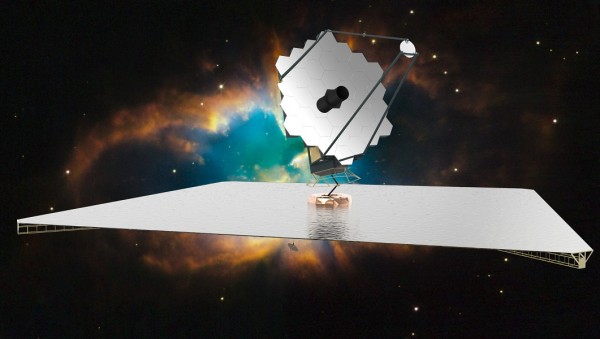By Ana Verayo, | February 22, 2016

This artist’s rendition shows a possible design of a potential successor to the Hubble Space Telescope. A NASA-led team of experts in now investigating the viability of this conceptual mission, called the Advanced Telescope Large-Aperture Space Telescope.
The iconic Hubble Space Telescope presented the world with the most stunning images of the universe and cosmic objects in between, providing crucial scientific discoveries for mankind. Now, after being in orbit for 25 years, NASA is preparing to launch a new generation of space telescopes that will pay homage to Hubble, expanding and continuing its mission beyond.
Like Us on Facebook
One of the new space telescopes is known as the James Webb Space Telescope (JWST), which is named after one of NASA's first administrators, that will become the direct descendant of the Hubble. This gigantic space observatory will be using 18 independent mirrors that are precisely aligned with each other to created a single massive mirror in space, measuring 250 inches in diameter, in order to collect more light to uncover hidden celestial bodies. The telescope is scheduled to launch in October 2018, on top of an Ariane 5 rocket.
Not only does it boast a more powerful mirror to reveal the secrets of the universe, the JWST will also be beneficial to many astronomers across the world, where telescope data will be more accessible. The main mission of the space telescope is to hunt for exoplanets that are orbiting distant star systems, study more celestial bodies in our own solar system and galaxy and also detect the first light and first stars that were created during the earliest days of the universe.
NASA officials say that using the current viewing wavelengths of Hubble, this allowed science to go further beyond, to even more distant objects which are highly redshifted as their light goes through ultraviolet, optical and then towrds to near infrared. This means, detecting the first stars and galaxies that were first created would require an infrared telescope.
After the launch of the JWST, NASA will launch the Wide Field Infrared Survey Telescope (Wfirst) that can view 100 times more sky area in one single view than current Hubble capabilities. Astronomers believe that this instrument can also discover millions of unknown or hidden galaxies including exoplanets that are conducive for life. This new observatory is slated to launch in the mid 2020s which can also measure elusive, invisible dark matter.
In 2017, the Transiting Exoplanet Survey Satellite (TESS) mission will be launched to search for exoplanets that are similar to Earth, that could possess extraterrestrial life or microbial life. This new telescope can also gather data and monitor alien worlds that pass by through their sun, when they are in transit. This method in detecting exoplanets has been utilized by ground observatories to detect bigger planets however, TESS will be able to search for smaller,rocky worlds like super Earths that orbit distant stars.
Apart from the Hubble and the JWST, the Advanced Technology Large-Aperture Telescope (Atlast) is slated to launch in the 2030s which is currently in the early stages of planning. The space observatory will boast a mirror between 300 to 600 inches, involving a telescope with 2,000 times more sensitivity than Hubble and ten times greater resolution than the JWST. Astronomers will use this to search for water vapor, methane and other atmospheric properties and elements of alien worlds that could indicate life.
-
Use of Coronavirus Pandemic Drones Raises Privacy Concerns: Drones Spread Fear, Local Officials Say

-
Coronavirus Hampers The Delivery Of Lockheed Martin F-35 Stealth Fighters For 2020

-
Instagram Speeds Up Plans to Add Account Memorialization Feature Due to COVID-19 Deaths

-
NASA: Perseverance Plans to Bring 'Mars Rock' to Earth in 2031

-
600 Dead And 3,000 In The Hospital as Iranians Believed Drinking High-Concentrations of Alcohol Can Cure The Coronavirus

-
600 Dead And 3,000 In The Hospital as Iranians Believed Drinking High-Concentrations of Alcohol Can Cure The Coronavirus

-
COVID-19: Doctors, Nurses Use Virtual Reality to Learn New Skills in Treating Coronavirus Patients







